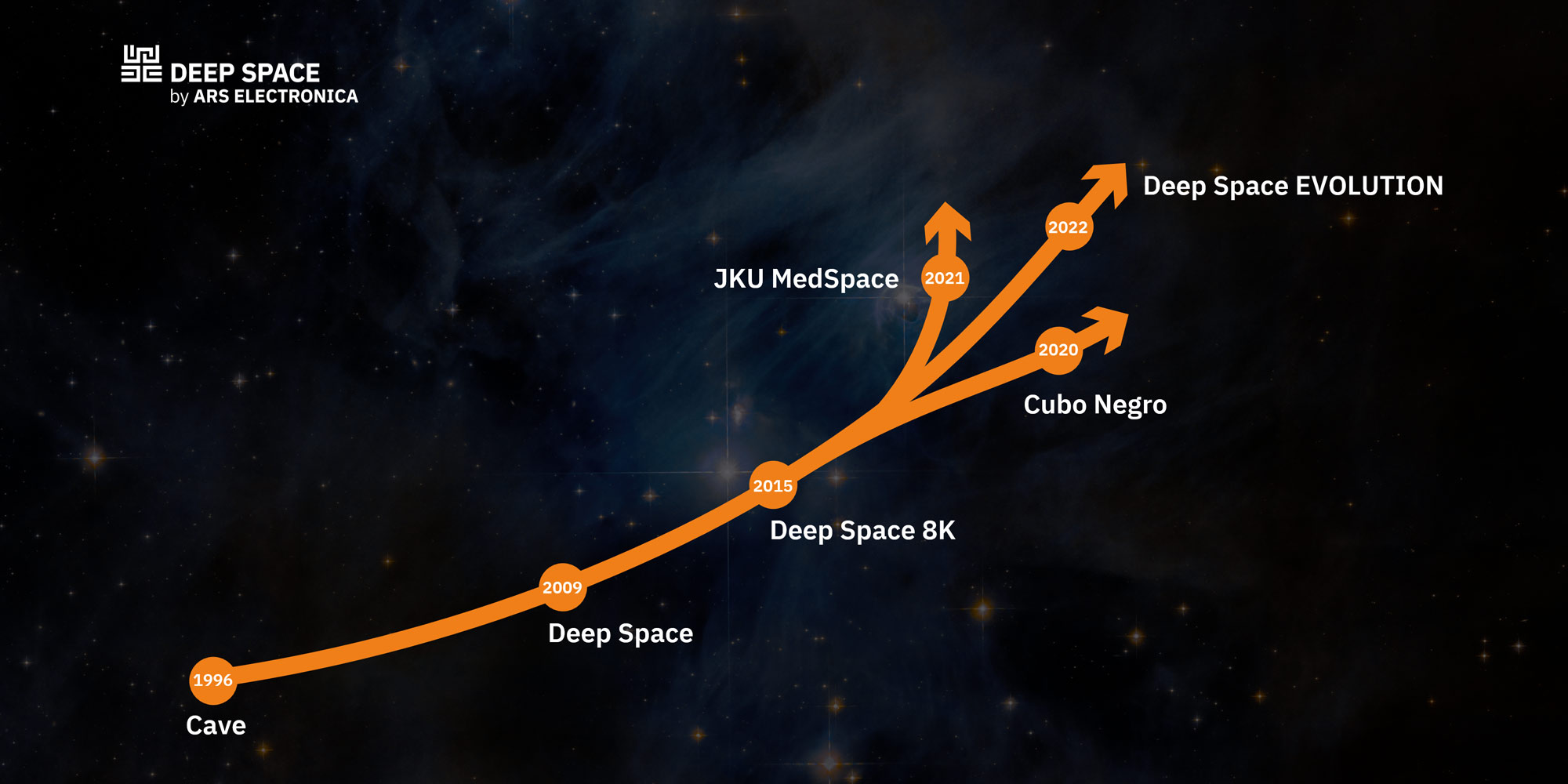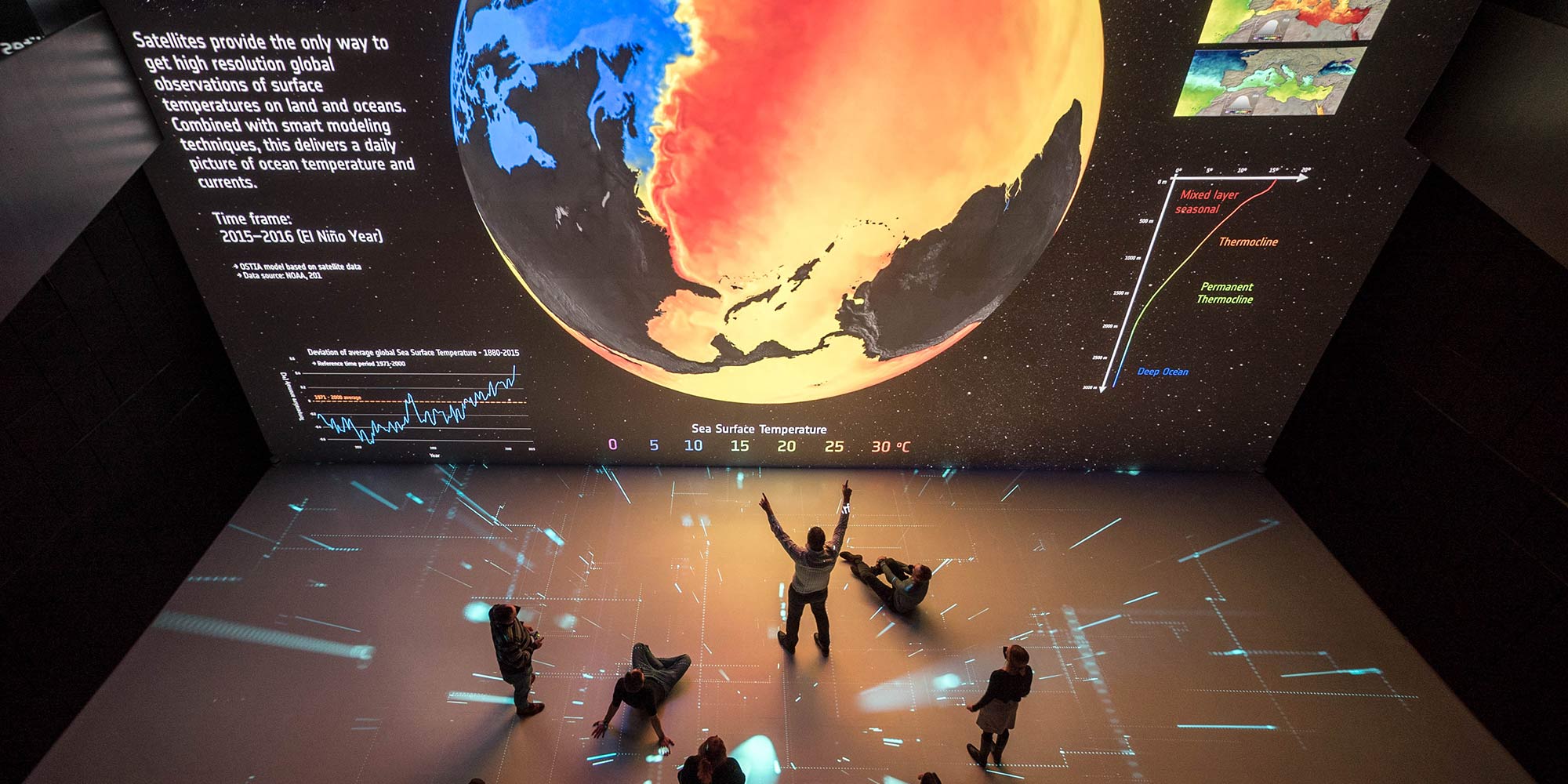Back to the future or everything starts with the CAVE, …
On 6 September 1996, the Ars Electronica Futurelab team invites to a world premiere. On the programme is the opening of the CAVE – a 3 x 3 x 3 metre small room that plays big. Everything inside – floor, ceiling, walls – is a projection surface. A network of four computers and a tracking system that constantly determines the position of visitors equipped with 3D glasses makes it possible to immerse oneself in virtual worlds as never before. In the form of the CAVE, Ars Electronica henceforth has at its disposal a unique playground where scientists, artists and developers from all over the world will soon be cavorting and experimenting with new ideas here in Linz.

… leads over the Deep Space …
We jump into 2009. Linz is the “European Capital of Culture” and invites you to the opening of the new Ars Electronica Center right on 2 January. The Museum of the Future, which has been expanded to 6,500 m², now has a “Deep Space” that immediately becomes a crowd puller. Wall and floor projections here measure an impressive 16 by 9 metres, and thanks to laser tracking, interactive image worlds can also be staged. Because the sophisticated high-tech composition of the Ars Electronica Futurelab is the only one of its kind in the world that is also accessible to the general public, Deep Space is attracting a great deal of international attention.

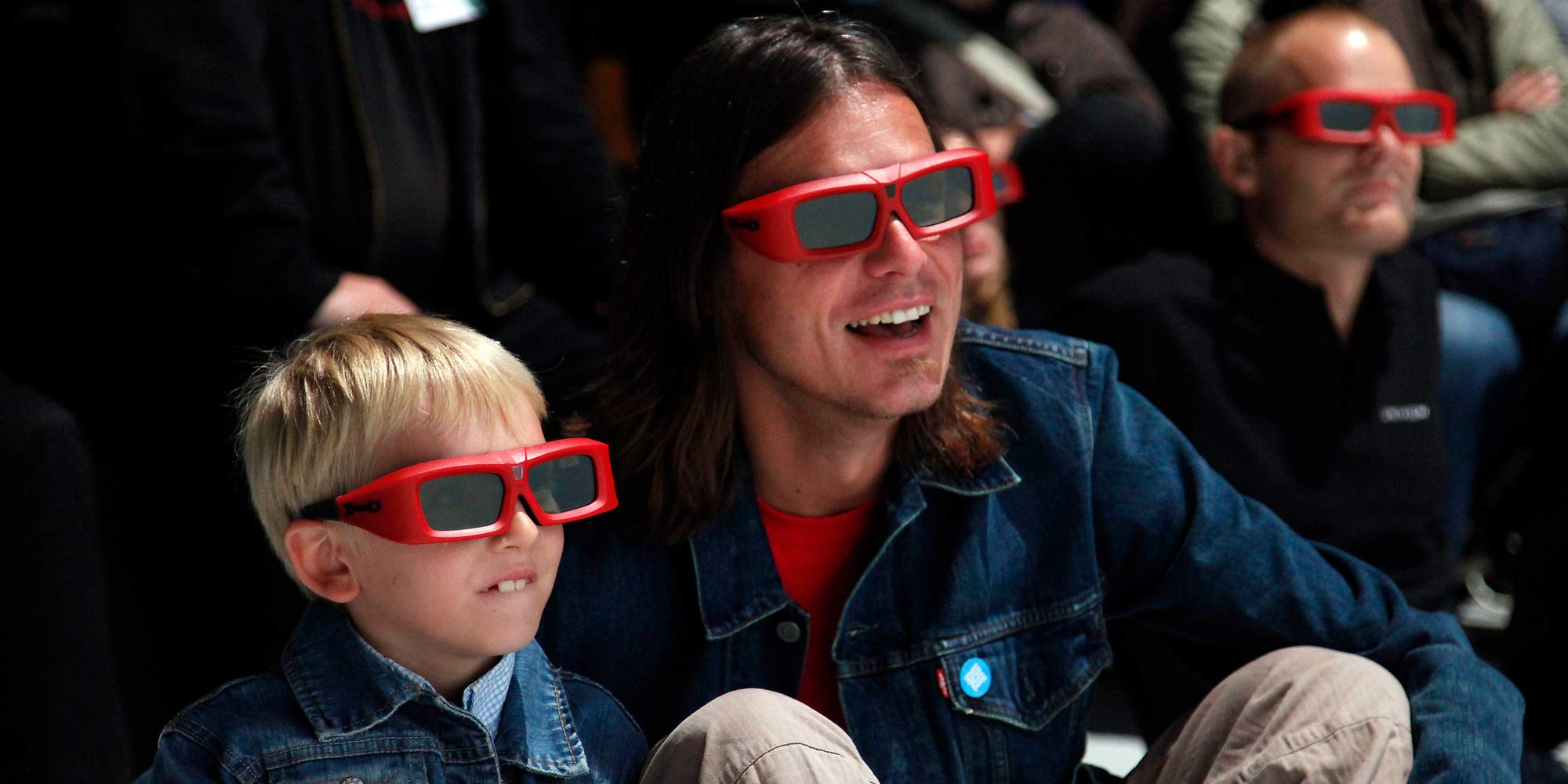
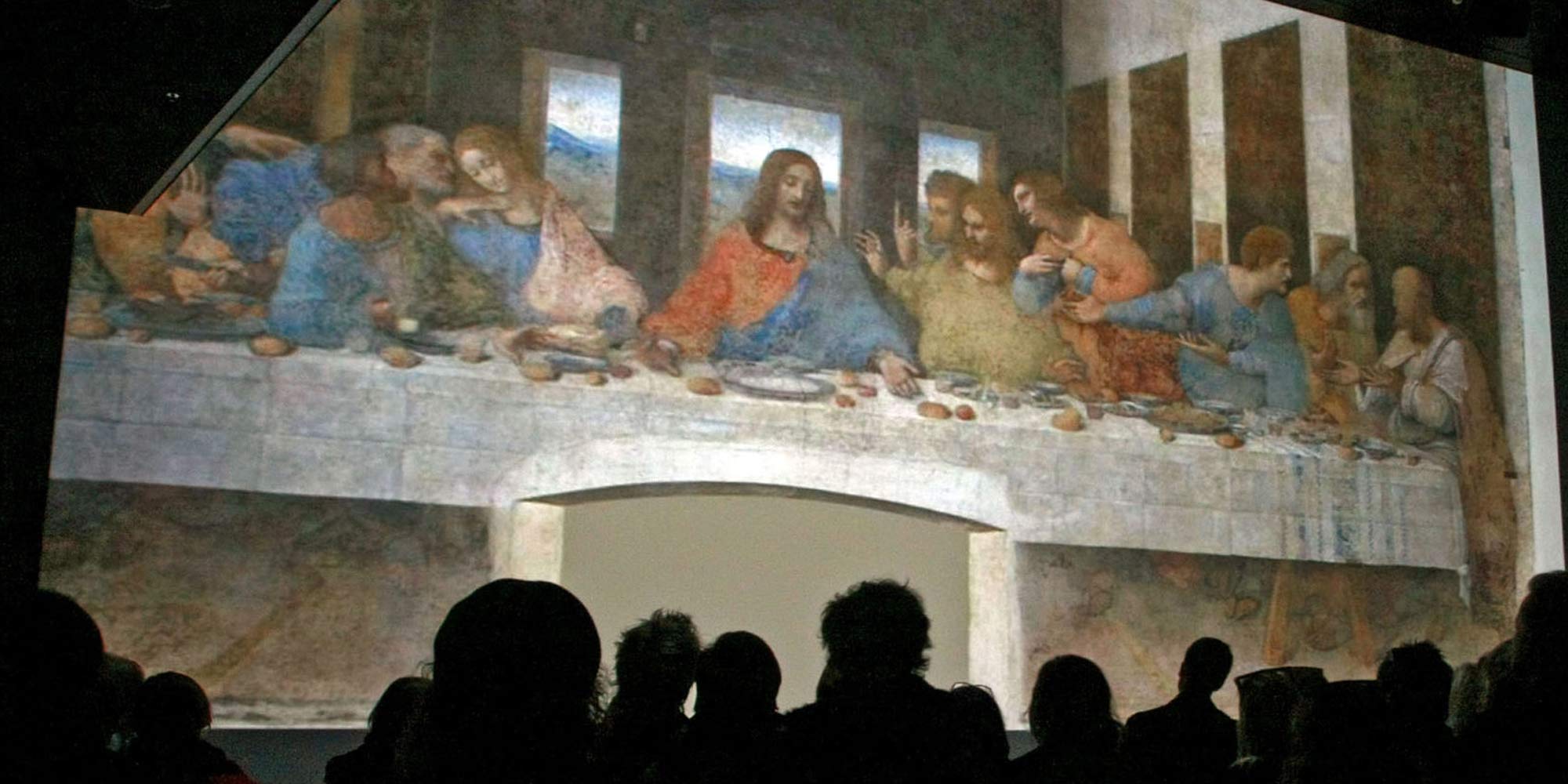
… and the Deep Space 8K …
In spring 2015, the Ars Electronica Futurelab team tackles the next milestone. After months of intensive research, tough negotiations and extensive testing, Deep Space becomes Deep Space 8K. The latter refers to the resolution of the projected images, which now comprise a whopping 4096 by 2160 pixels for each of the eight projectors. Depending on the geometry of the installed projection, this results in a resolution of up to 8K on the wall and floor. The Deep Space 8K guarantees visual experiences that truly take your breath away.
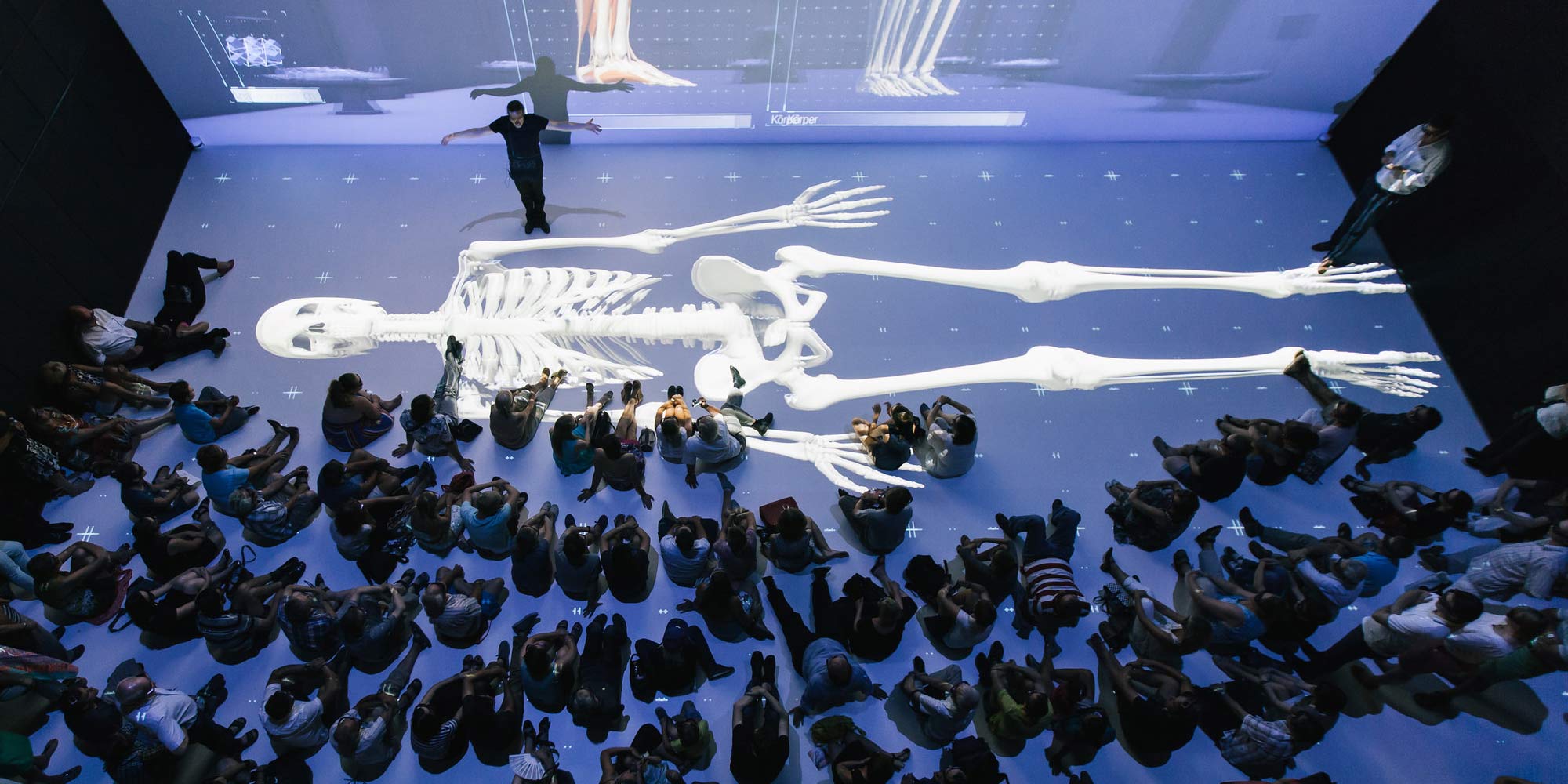


… to Deep Space EVOLUTION
March 29, 2022, here and now. For months, the teams from Ars Electronica Futurelab and Ars Electronica Solutions have been pushing ahead with the evolution of the Deep Space 8K. For the display on the 16 x 9 metre wall, the Deep Space 8K now has four laser projectors that offer several advantages: they can display a much larger colour space, require 32 percent less electricity and are much quieter in operation because they do not have to be cooled as much.
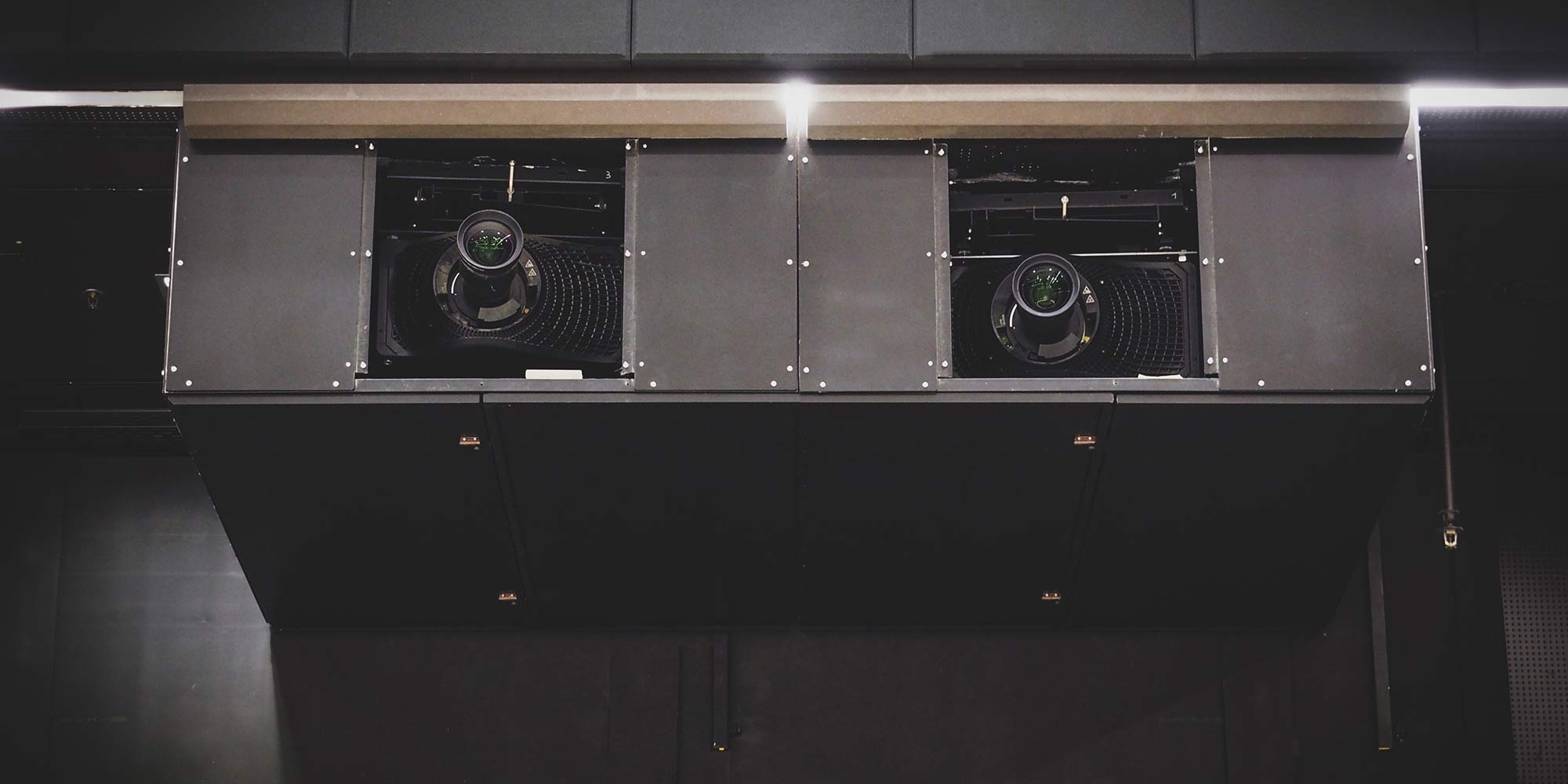


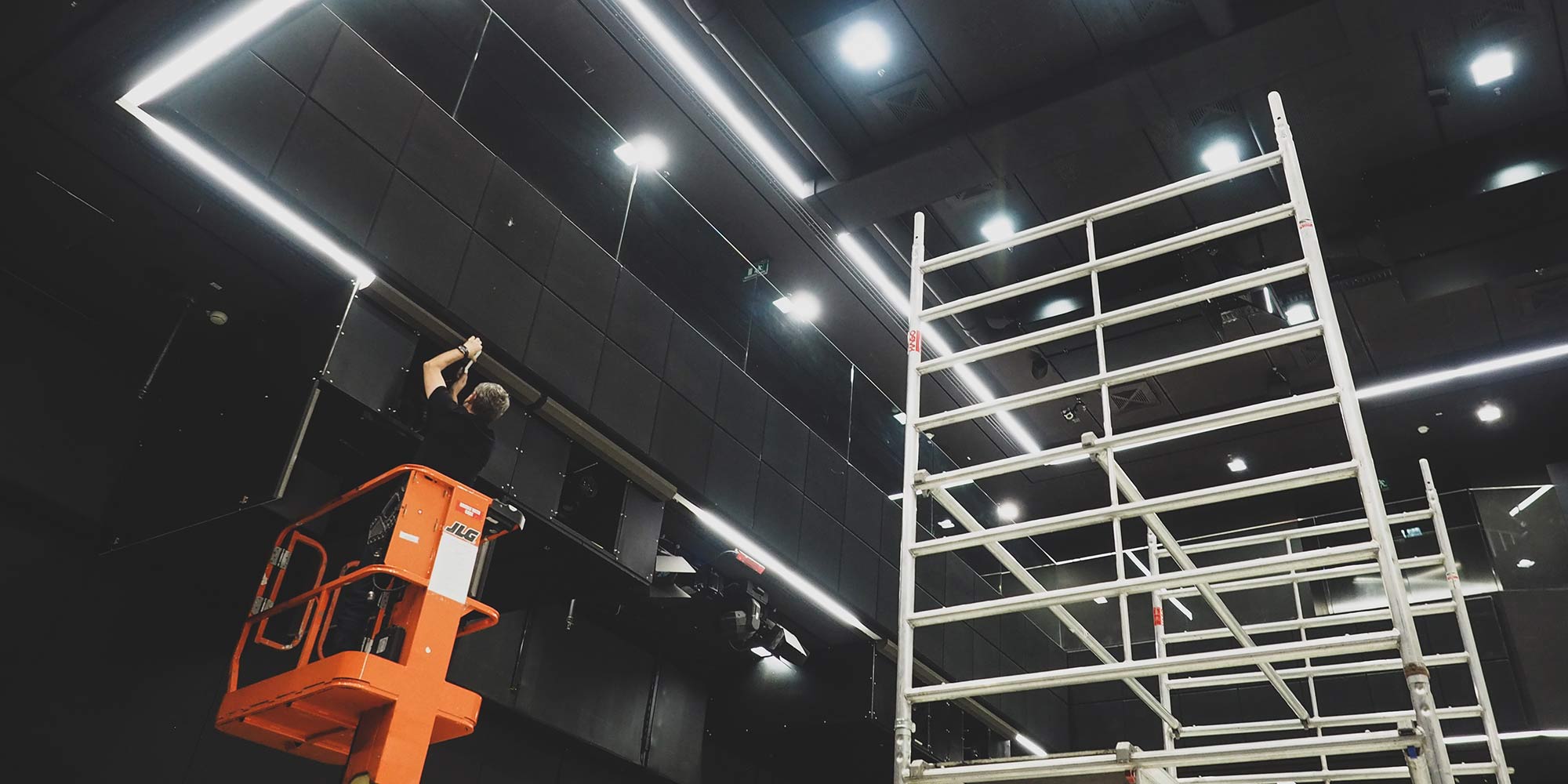
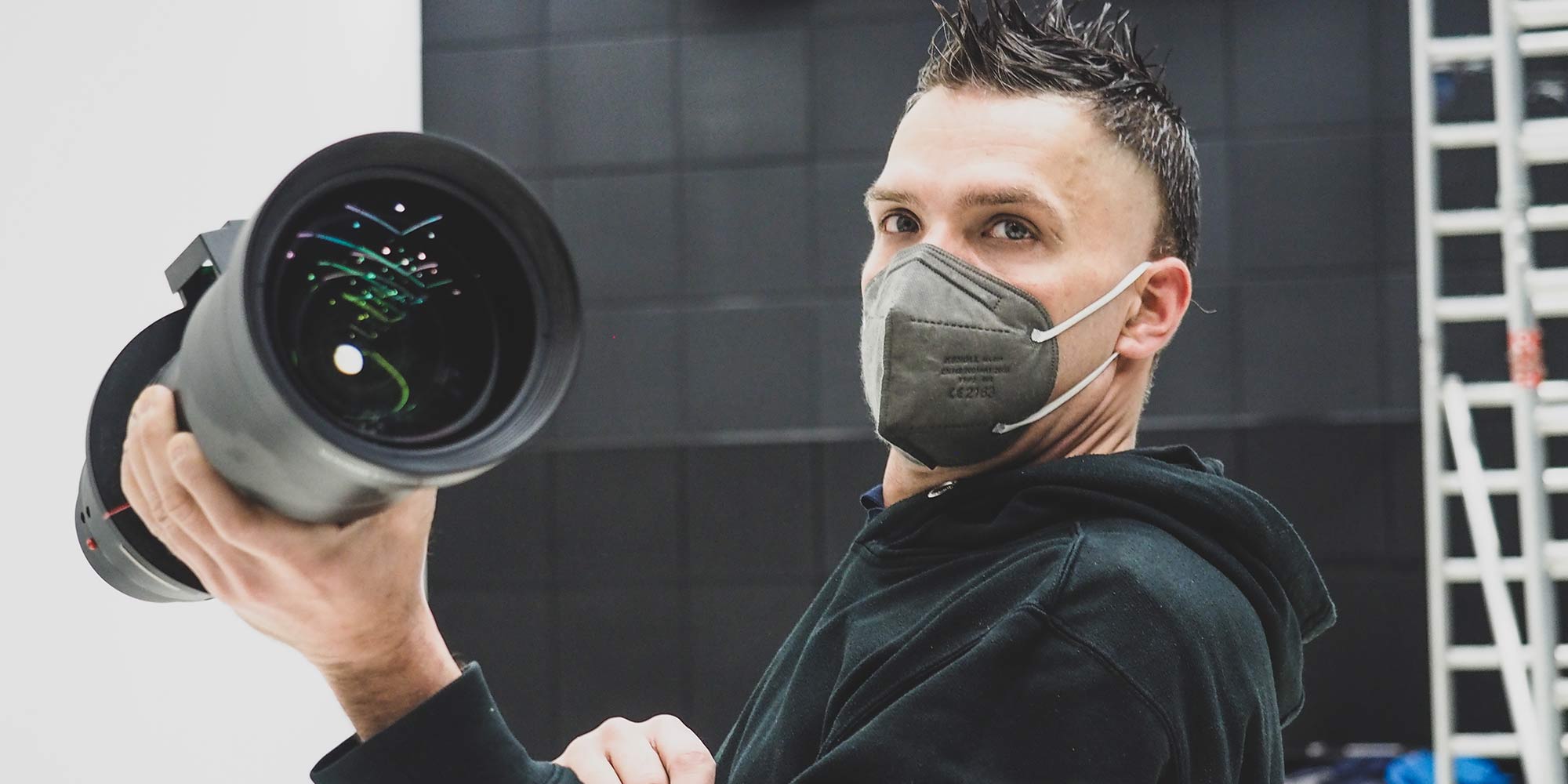
The seven workstations on which Deep Space 8K runs were also completely renewed. The result is an increase in computing power of around 200 percent, with a simultaneous reduction in power consumption of 10 percent. There is also a significant performance increase in the graphics cards – instead of four, only two are needed per computer, which in turn reduces their power consumption by around 40 percent. Whereas Deep Space 8K previously had 2D tracking that could determine the position of objects on the ground, the space is now equipped with a new 3D tracking system that can identify any position in space. The new system is used for interactive audience programmes, artistic projects and, last but not least, the many interaction experiments of the Ars Electronica Futurelab. In addition, the new tracking system forms the technical basis of a virtual production system also developed in the Futurelab, which has already been used in the context of home delivery streamings.

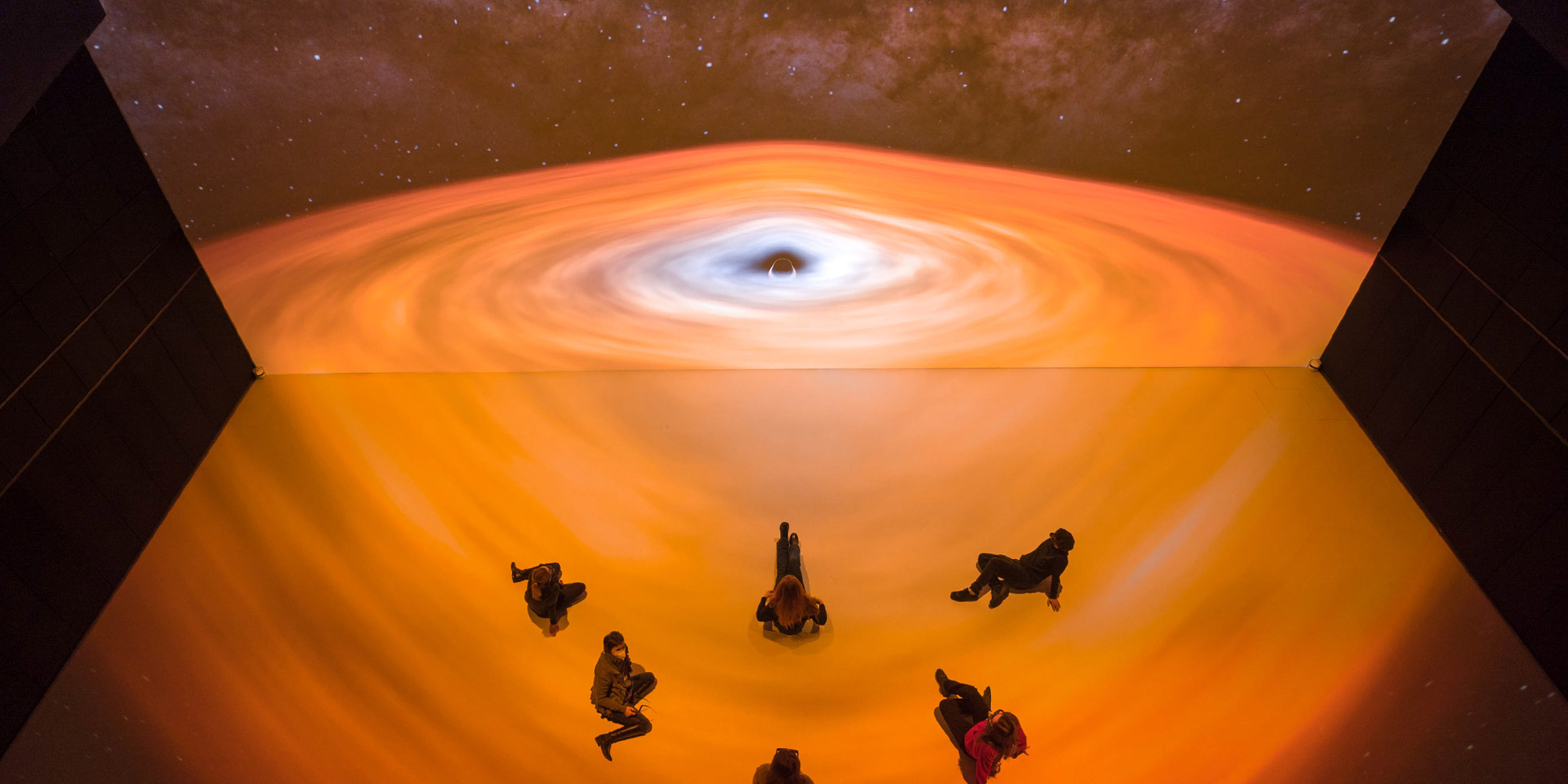

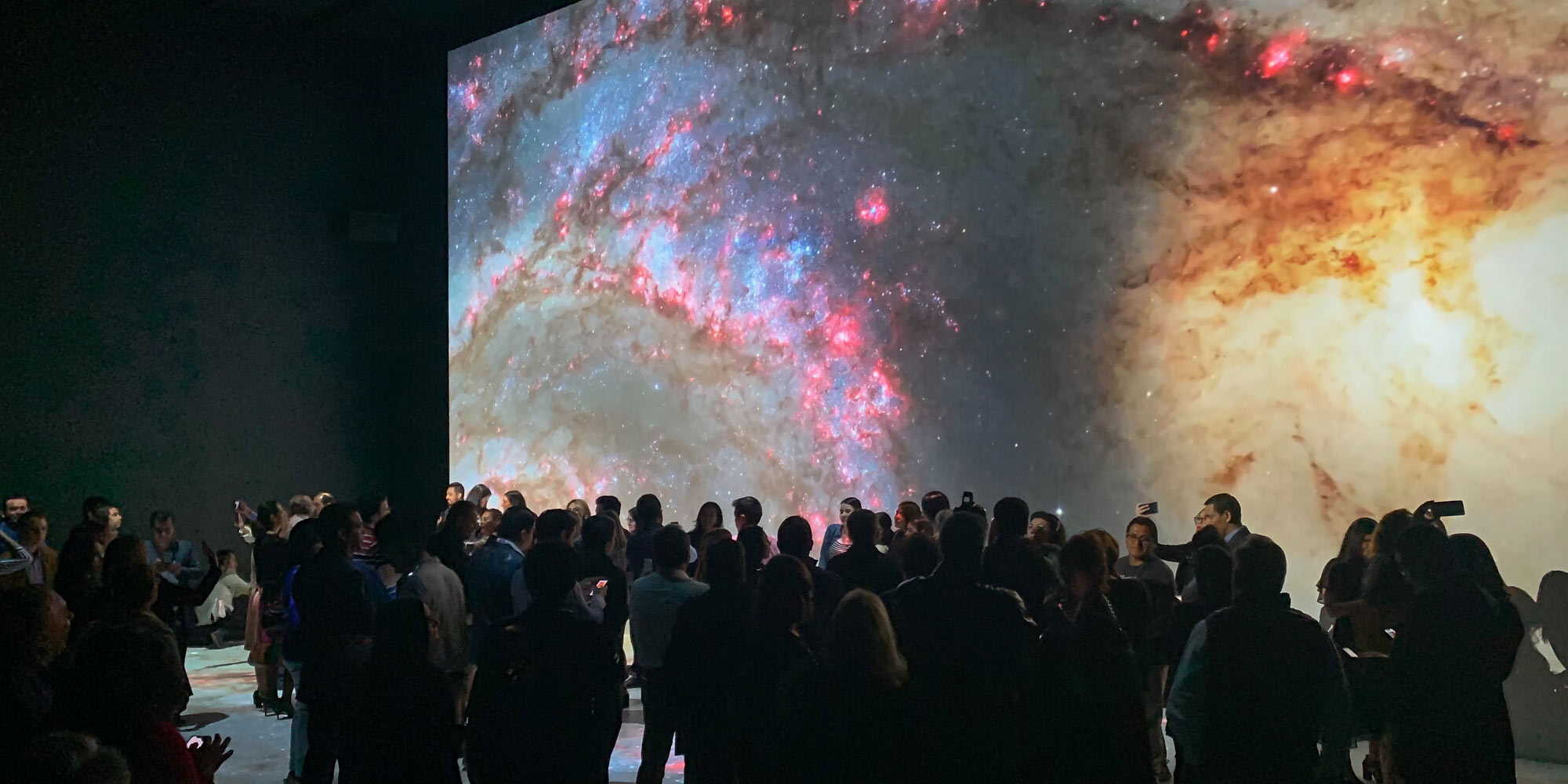
Last but not least, Deep Space EVOLUTION stands for a fundamental revision and further development of the control and operating system as well. This includes an update of the software to achieve more security, more reliability and a higher robustness. A newly implemented content management system opens up numerous additional functions, and the presenters also have a new control interface on their smartphones. The Unreal Engine used in the world’s leading computer game productions is now used for 3D content development. A new licence management system for content packages also guarantees that content from Deep Space 8K can be easily passed on to partners. This system is already in use at the JKU medSPACE at the JKU MED Campus Linz as well as at the Cubo Negro at the Centro de Ciencias in Culiacan, Sinaloa Mexico.
